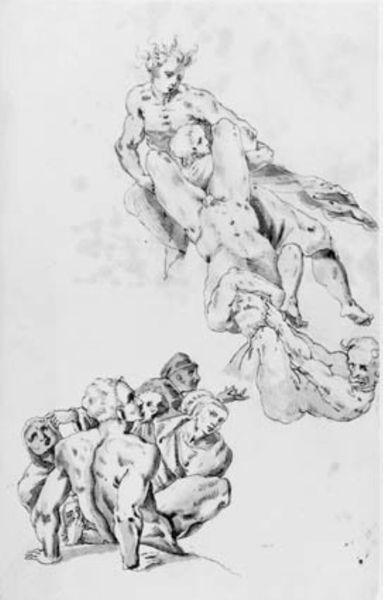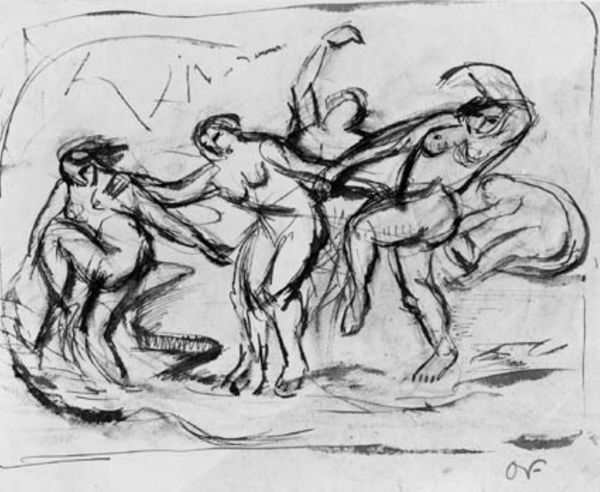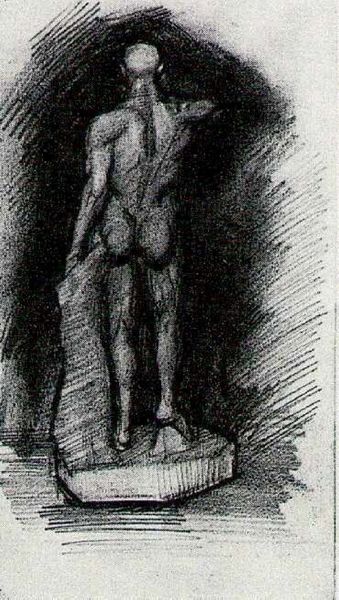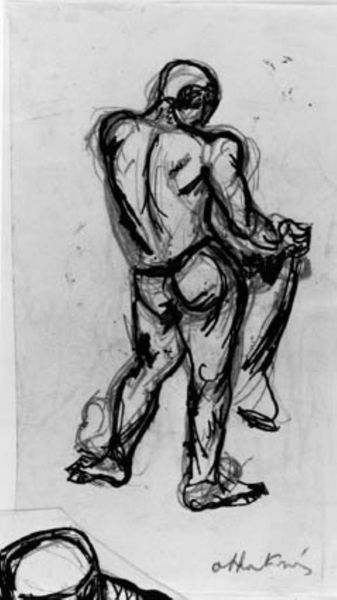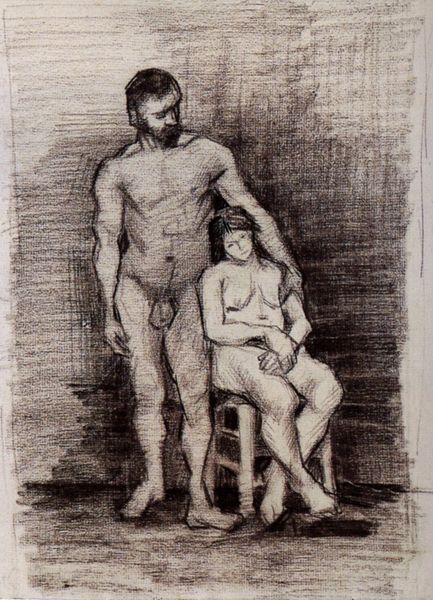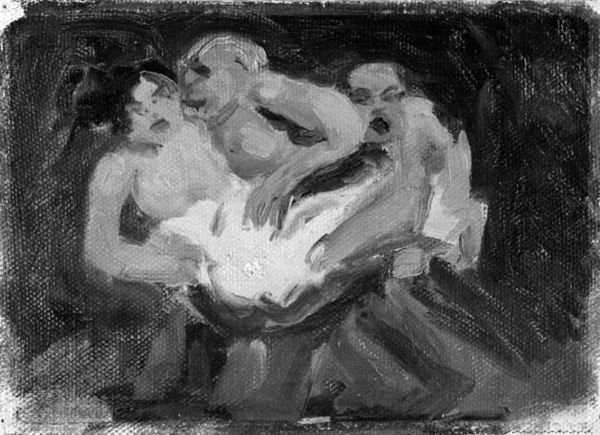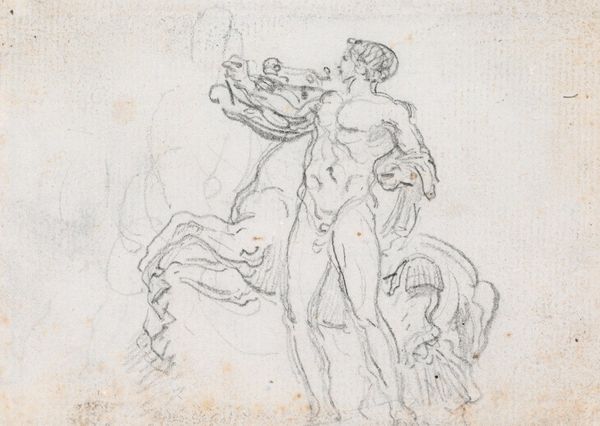
drawing
#
drawing
#
pencil sketch
#
sculpture
#
charcoal drawing
#
charcoal art
#
pencil drawing
#
black colour
#
black and white
#
charcoal
#
graphite
#
pencil art
Dimensions: 205 mm (height) x 227 mm (width) (bladmaal)
Editor: This is "Composition with Five Nudes, Standing Figures" by Othon Friesz, created sometime between 1905 and 1908. It looks like a charcoal and pencil sketch, and I find its unfinished quality really intriguing. What strikes you most about this piece? Curator: Well, what jumps out at me is the tension between the classical subject matter and the modern, almost raw execution. Nude figures were a staple of academic art, often imbued with allegorical or mythological meaning. Friesz, though, seems to be deliberately undermining that tradition. Editor: How so? Curator: Look at the sketchiness, the lack of idealization. These figures are rendered quickly, almost crudely. It challenges the prevailing academic style that was endorsed by institutions and powerful art critics. The drawing pushes against established artistic hierarchies and their power. This raw, expressive style reflects the rise of modernism. Editor: So, it's a statement about artistic freedom? Curator: Precisely! It’s asserting the artist's right to depict the human form without adhering to the established norms. And, of course, such artistic choices are inherently social and political statements as they critique established societal norms. This artwork becomes a rejection of the artistic status quo, claiming the artist's independence. Do you see any echoes of classicism despite the stark modern features? Editor: I guess the figures’ poses feel a bit classical. But I mostly notice the deliberate rejection of that polish. Curator: And that tension is where the real meaning lies, wouldn't you agree? The drawing underscores a desire to move beyond traditional constraints. Editor: Definitely. I never considered how radical a simple sketch could be! Now I am more curious about Friesz' influences and the reactions this artwork provoked. Curator: Absolutely, it shows how deeply art is always embedded in social context.
Comments
No comments
Be the first to comment and join the conversation on the ultimate creative platform.

